Mr. Toad
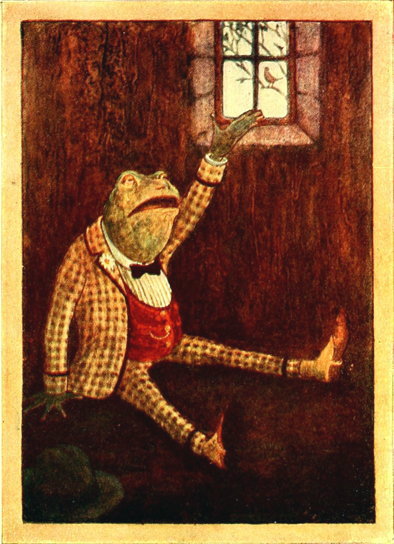
Nancy Barnhart, 1922
One in a series of posts dedicated to pop-culture depictions of frogs — as symbolic representations of “too-muchness — from 1904–2003.
In the first illustrated edition (1913) of Kenneth Grahame’s instant-classic 1908 children’s book The Wind in the Willows, I for one was surprised to discover, the character Toad doesn’t wear a waistcoat or top hat. In fact, he doesn’t wear anything — nor do his friends Mole, Rat, and Badger.
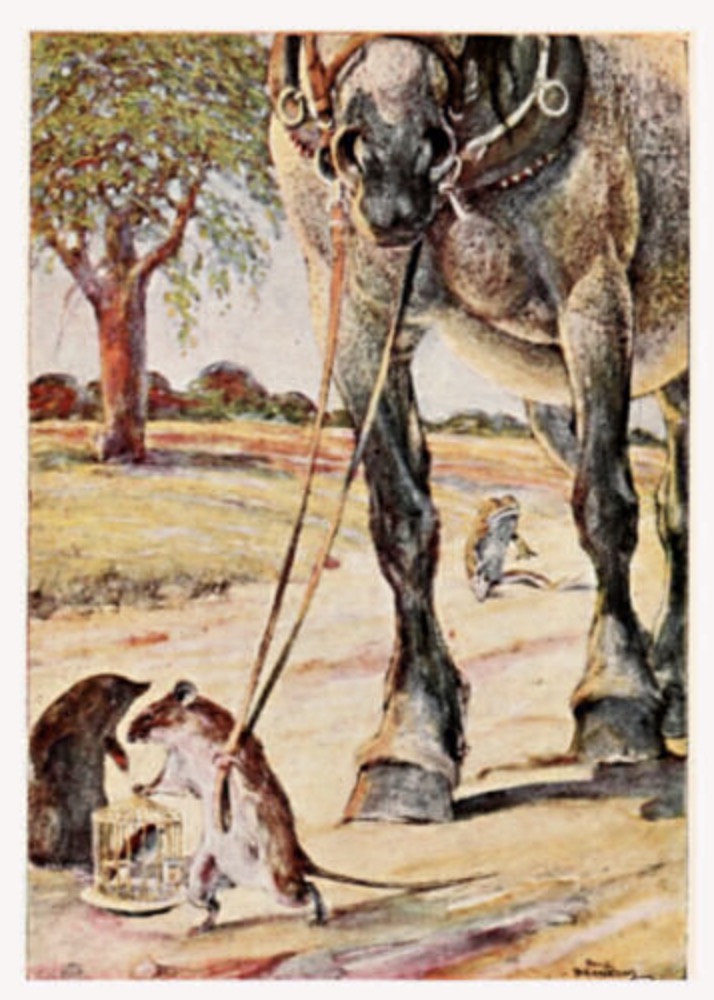
Grahame’s Toad is a delightful, unforgettable character, who revalues every value: He is proud instead of humble, lazy instead of industrious. He lies, cheats, and steals in pursuit of his obsessive passions. “Ho, ho! I am The Toad, the handsome, the popular, the successful Toad!” he exults.
Toad is the bumptious-est of frogs. Unlike his predecessors, he is not merely self-satisfied. He is a monster of egotism; he suffers from a surfeit of selfhood. He is larger than life! As such, he will become the exemplary frog of twentieth-century pop culture… until Kermit, that is.
Toad’s song:
The clever men at Oxford
Know all that there is to be knowed.
But they none of them know one half as much
As intelligent Mr. Toad!
Subsequent Wind in the Willows illustrators would connect the dots between Grahame’s Toad and the pre-existing Victorian dandified-frog meme. Though they’d put an Edwardian spin on his look….
Nancy Barnhart’s 1922 illustrations for The Wind in the Willows gives us a nattily dressed Toad — waistcoat, bowtie, spats, the works. This is how he has been depicted ever since!
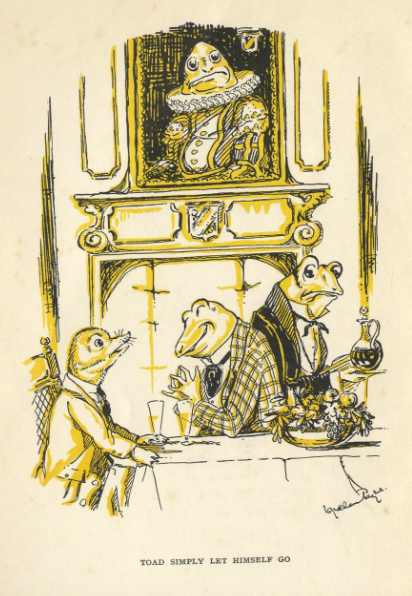
Wyndham Payne’s 1927 illustrations for The Wind in the Willows continue to depict Toad as a natty dresser.
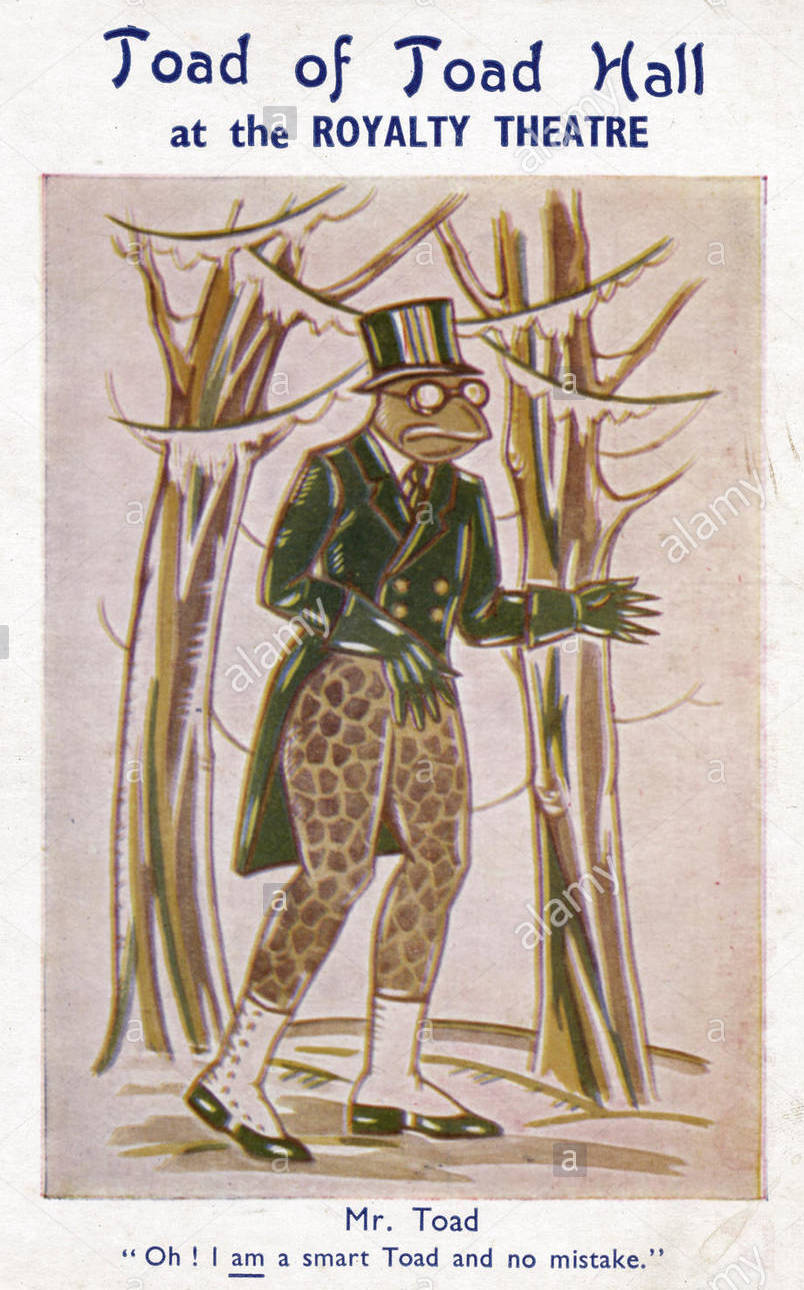
In 1929, A. A. Milne — whose Winnie-the-Pooh was published in 1926, followed by The House at Pooh Corner in 1928 — published a play version of Kenneth Grahame’s The Wind in the Willows. He ruthlessly excised all the slow-moving, nature-loving bits and focused on Toad’s adventures. Milne’s adaptation, Toad of Toad Hall, first appeared in London in 1930. It was a hit, and it has influenced public perception of Grahame’s book ever since. (Which is too bad, it’s an extraordinary book.)
Milne’s take on Toad begins to move the pop-culture frog discourse from “bumptious” to “rapscallion.” Toad, of course, is both.
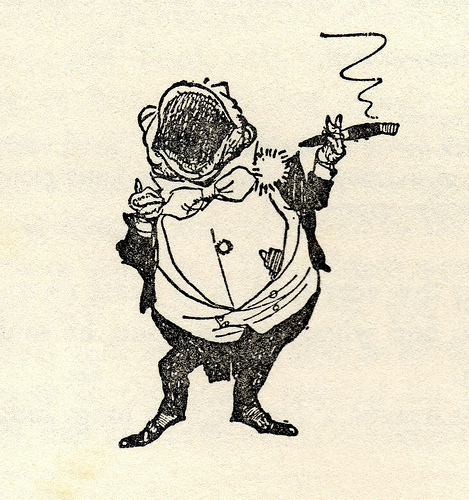
The most popular illustrations for Wind in the Willows are probably those by E. H. Shepard, originally published in 1931. Shepard, well-known for his illustrations of Milne’s Winnie the Pooh books, was asked to illustrate a new edition of Grahame’s book following Milne’s stage adaptation, Toad of Toad Hall.

